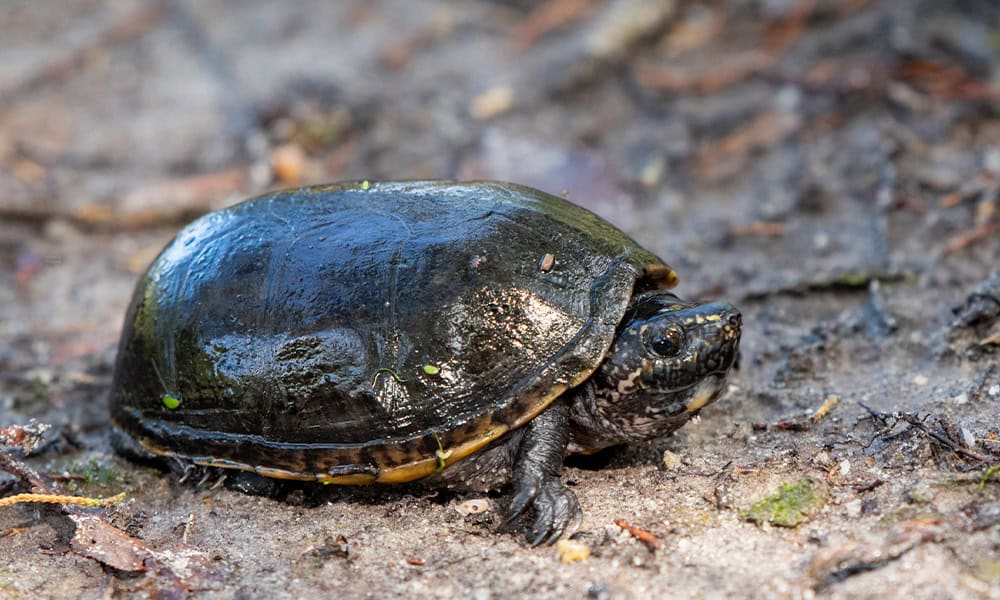In a weird way, stinky turtles have led to my current life as a guy in Costa Rica working in wildlife monitoring. Up until the age of ten I lived in southern New Jersey. The area I grew up in wasn’t exactly a hotspot for species diversity, but it did have a positive feature for those with a zest for wildlife – lakes. Historically, the area had been the site of cranberry production. By the time I showed up, the old cranberry bogs were shallow lakes full of fish, birds, and reptiles.
I spent my younger years fishing and splashing around in the lake across the street from my house. One of my favorite things to do was to get a net with a long pole and walk around the edges of the lake and see what creatures I could scoop up. A frequent target of my net was a little turtle called a stinkpot (Sternotherus odoratus). Stinkpots were small, dark, highly domed turtles that earned their name by having a funky, stagnant water smell.
As a ten-year-old kid, nothing made me happier than spending time in nature scooping up stinkpots with my net. After a long, circuitous route of education and immigration, I’ve kept the zeal for nature but traded my net for motion-sensored camera traps. My location has changed but my goal hasn’t. I’m still interested in spending as much time in nature as possible.
A few weeks ago, I was living the dream, reviewing camera traps in the tropical dry forest of northern Guanacaste when I had a full-circle stinky turtle moment. After a long, successful day of crashing around in the forest and looking at wildlife videos, I was in my truck driving home on a forested road, splashing through puddles in a light rainstorm when I noticed a small dark turtle crossing the street.
I got out to investigate, picked up the turtle and got smacked in the face by a smell from my past – funky pondwater turtle stench. This turtle, though slightly larger than the turtles of my youth, smelled exactly like a stinkpot.
After a little research I found that the Jersey turtles and Tico turtles smelled the same because they’re members of the same family, kinosternidae or mud turtles. The turtle I picked up in the street was a scorpion mud turtle (Kinosternon scorpioides), known as a tortuga candado in Spanish. They are one of three species of mud turtles in Costa Rica and the only one that lives in the seasonally dry habitat of Guanacaste.
Scorpion mud turtles are semi-aquatic turtles that hang out in swamps and ponds. I had always assumed their smell was a result of their stinky environment, but I was wrong. They produce their stink themselves via four scent glands.
Scientists hypothesize that the musk produced by the glands could have multiple uses including protection from parasites, a method of attracting mates or sending messages via pheromones as well as protection from predation. One thing is for certain, their glands kick into high gear when a bearded guy gets out of his truck and picks them up.
I have recorded exactly one video of a scorpion mud turtle with my camera traps and, unfortunately for this individual, I recorded it in the mouth of a young jaguar. The camera was placed over a yucky-looking waterhole in the middle of the forest, and it recorded the jaguar walking with the turtle in its mouth and then sitting down to eat it.
I later returned to the spot where the jaguar sat down and found the remains of the shell, confirming it was a scorpion mud turtle. Apparently, the strong smell wasn’t enough to ward off this predator. Take a look at the video below.
About the Author
Vincent Losasso, founder of Guanacaste Wildlife Monitoring, is a biologist who works with camera traps throughout Costa Rica







